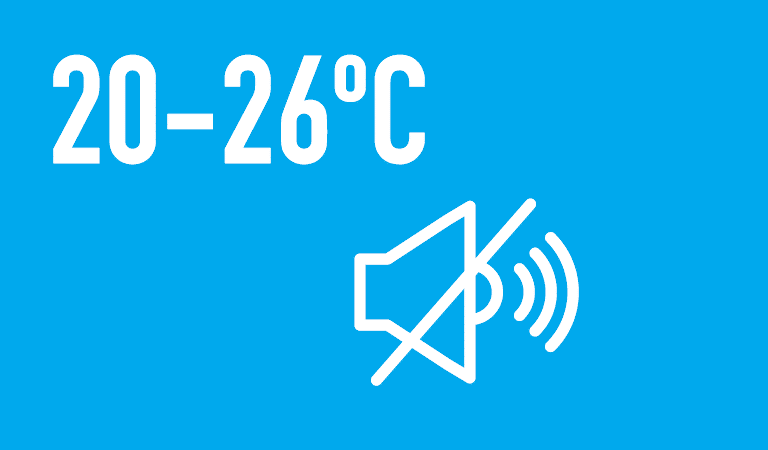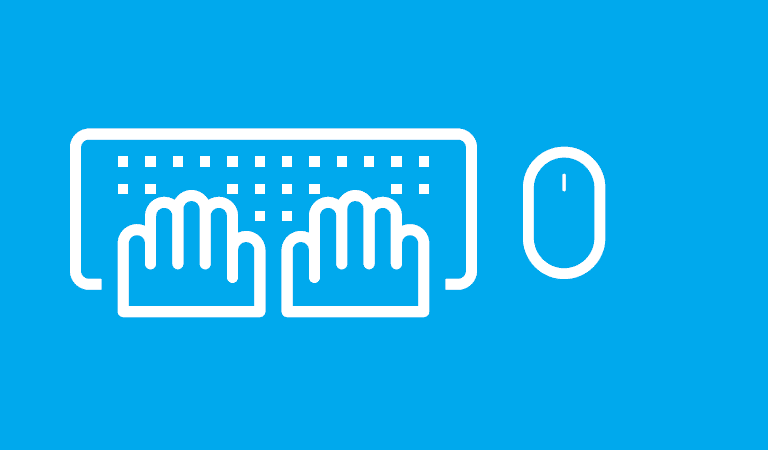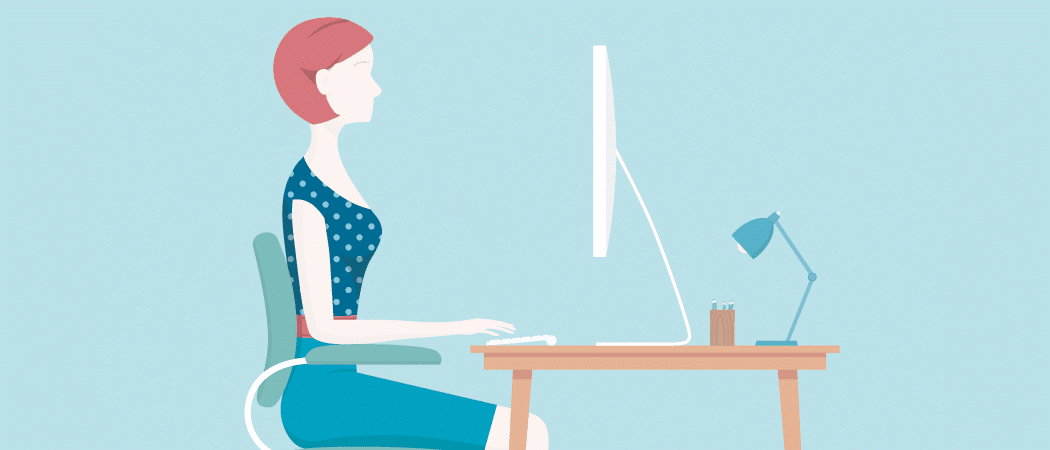To ensure the safety and health of people, guarantee business continuity and implement the containment measures that were established, MAPFRE had to reinvent itself and seek alternatives to its usual way of working, establishing, in those cases where the type of work so permitted, a system in which traditional office work was combined with working at home or remotely.
Despite the multiple benefits that teleworking can offer (operational continuity, better work-life balance, greater flexibility, etc.), changing from an on-site workplace to the home office necessitates a series of adaptations, not only in the way we relate to our colleagues (exclusively online or via the phone), but also in terms of the space in our houses that we allocate for this purpose.
Aware of the challenges and difficulties that this new work scenario has meant for all of us, today we want to give you some ergonomics tips that will help you work in the healthiest way possible.
WORKING ENVIRONMENT
It is essential to create a pleasant environment, where the space and environmental conditions allow you to work comfortably. MAPFRE, always concerned for the well-being of its employees, guarantees safe working spaces that comply with the applicable regulations in aspects such as lighting, temperature and humidity.
If possible, establish a fixed location, away from the noisiest areas (television, games room, etc.) and where there is adequate lighting, preferably natural. It is also important to control aspects such as temperature and humidity. Open the windows and air out the room for at least five minutes each day. Try to maintain a comfortable temperature, between 20°C and 26°C, and avoid an environment that is too dry.

Keyboard and mouse
Ensuring a minimum distance of 10 cm between the keyboard and the edge of the table will allow you to comfortably rest your forearms and type without bending your wrists. Position the mouse close to the keyboard to avoid overextending your elbow.
The keyboard and mouse should be separate from the screen, so that you can adjust all the elements independently, adapting them to your needs and to any possible changes in the task to be performed. Sometimes, the location of these components is limited by the length of the cables. If necessary, use an extension cord or approved power strip, or move the workspace closer to the socket area.

Desk
The dimensions must be sufficient to comfortably accommodate the computer equipment and its peripherals (keyboard, mouse, etc.) as well as any supporting documentation you may need. It should be kept tidy and free of objects that you are not going to use. Avoid placing items under your desk that cause discomfort or limit leg movement.
Try to choose a desk that allows you to adopt the best possible posture. If you notice any shine on its surface, cover it with a tablecloth or paper to avoid reflections and glare. Avoid working from the sofa or in bed as this generates inappropriate postures that can lead to musculoskeletal disorders.

Screen
Whenever possible, place the screen perpendicular to the window or other light sources, thereby avoiding reflections and glare.
Physical fatigue and eyestrain, the main ergonomic risks associated with working with data display screens, can be aggravated in this situation.
You should place the screen at a distance of 40-60 cm from your eyes, aligning the top of the screen with the height of your eyes. Place it as centrally as possible, aligned with the keyboard and chair, as this will prevent the trunk and/or neck from rotating.
If you can only use a laptop screen at home, place something underneath it (packets of paper, books, boxes, etc.) that raises its height. In this case, use a separate keyboard and mouse.

Telephone
If you must use the phone while working at the computer, avoid holding it between your face and shoulder. Use the speaker or auxiliary headset whenever possible. Remember to keep your back against the chair back while using the phone and avoid twisting and bending your trunk and/or neck.
Desk chair
t is important to adopt the correct body position while sitting, forming a right angle between the upper body and the lower body, with the back correctly supported by the back of the chair and with the feet resting on the floor.
To achieve this position, start by adjusting the seat height. How? Make sure that, when using the keyboard, your arm and forearm form a 90 degree angle. If your feet do not reach the floor in this position, use a footrest. Make sure that your legs also form a right angle.
Support your back correctly on the backrest, making sure that the lumbar region of the chair really supports this area of your back. This will ensure that the weight of your upper body is supported by the backrest of the chair and not by your back muscles (especially your lower back). If you use armrests, adjust these so that your forearms remain parallel to the floor without overloading your shoulders, in other words, without lifting or dropping them (they should be relaxed).
To help employees adopt the correct posture in the workplace, the chairs that MAPFRE makes available to its employees are equipped with all the necessary adjustment mechanisms.
Always avoid bad postural habits such as crossing your legs, sitting on them, leaning forward, sitting on the edge of the seat, and so on.
If you do not have a chair at home that can be adjusted in these ways, choose one that has as many of these adjustments as possible and which is comfortable and practical for you. You can use home-made adaptations to help you achieve, as far as possible, the ideal posture.
If the height of the chair is insufficient with respect to the work surface, use a cushion or something similar. If the chair is too high, you can adapt the height of the table by placing something underneath it, but always ensure that it is stable. If necessary, use a box or another object that can be used as a footrest.
If the lumbar area of your back is not adequately supported by the chair back, place a blanket, towel or cushion in that area. If the armrests collide with the table and prevent you from moving the chair close enough to the table, causing you to adopt awkward postures, you should remove these.

It is essential for your well-being to do regular physical activity, both during the working day and in your free time. From a musculoskeletal point of view, the benefits are: muscle elasticity, joint flexibility and muscle power —which reduces tension and increases muscle relaxation—, and greater movement coordination. Together, these help avoid any injuries or muscle spasms.
In our work we spend many hours sitting in the same position. It is therefore important that you alternate tasks, trying to get up from your chair every so often.
Take some breaks (5 to 10 minutes) throughout the day to avoid muscle and/or eye fatigue. These micro-breaks should be active, take advantage of them to do stretching exercises for the neck, back, shoulders and arms, as well as exercises to avoid eye fatigue, such as those explained below:
Shoulders and arms
Raise one arm to shoulder height, flex your forearm (can also be done with the arm extended) and bring your hand towards the opposite shoulder. Hold the elbow of the bent arm with the opposite hand.
Cross one wrist over the other, interlocking the hands, and extend the arms until the hands are above the head and slightly backwards, as if you wanted to touch the ceiling.
Bend one arm backwards by the side of the head, until your hand touches the opposite scapula (shoulder blade).
Grasp the bent elbow with the other hand and exhale as you slowly pull it downward.
Repeat the exercise with the opposite arm.

Core
Stand or sit: Bend your left shoulder and place your arm behind your head. With the opposite arm, hold your elbow and lean to the right until you feel a slight tension. Do the same stretch on the other side.

Eye relaxation exercises
Stare into the distance for a few seconds.
Alternate your gaze between a near object and a far object.
Draw the infinity symbol with your eyes in both directions. Or draw diagonals, from right to left and vice versa several times.

Neck
In a seated position, hold the edge of the chair with one hand to lock the shoulder on that side. With the opposite hand, reach over your head and hold it.
Breathe out slowly and pull your head towards your shoulder. Repeat the exercise on the other side.
With your hands clasped behind your head above the nape of your neck, keep your shoulders as low as possible, exhale slowly while pulling your head towards your sternum.
In a standing position, place your arms behind your back so that one arm is bent with the back of your hand toward your trunk and the other hand holds your elbow. Gently pull your elbow and try to bring it towards the middle of your back.
Breathe out slowly and tilt your head away from the locked shoulder.

Hands and wrists
Place your palms flat on a table with your wrists rotated so that your fingers point to your knees. Breathe out slowly while, without taking your hands off the table, you tilt your body backwards until you feel tension in the front of your arms.
Repeat the exercise, supporting yourself on the back of your hands.
Place your palms flat on a table with your wrists rotated so that your fingers point to your knees. Breathe out slowly while, without taking your hands off the table, you tilt your body backwards until you feel tension in the front of your arms.
Repeat the exercise, supporting yourself on the back of your hands.




